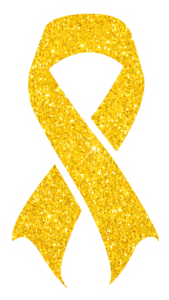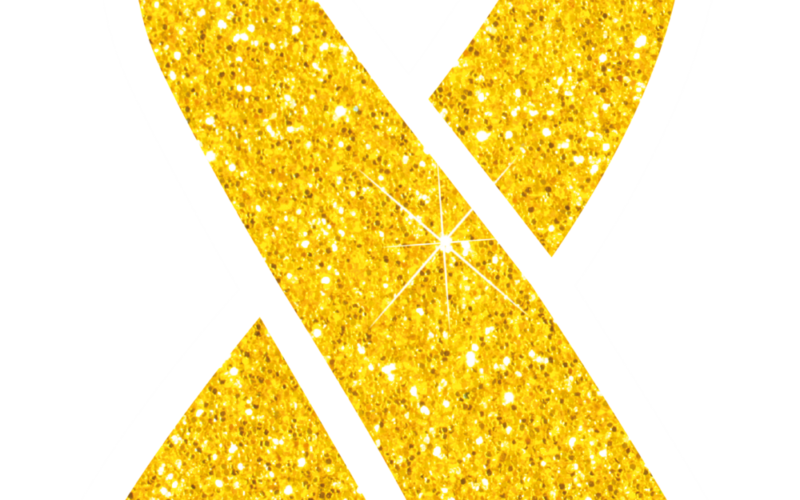The Realities of Childhood Cancer in Nigeria: Understanding the Symptoms, Treatment, and Support Needed

Despite these challenges, there are initiatives underway to improve it’s care and treatment in Nigeria. Non-governmental organizations and other healthcare organizations are working to raise awareness of the scourge and support families affected by the disease. The Nigerian government has also taken steps to improve cancer care and treatment, including the establishment of specialized treatment centres and coverage of childhood cancer treatment under the National Health Insurance Scheme. With continued efforts to raise awareness, improve access to care, and support families, we can help improve outcomes for children with cancer in Nigeria.
Read more 5 Health Benefit of Pumpkin Seeds
Common Childhood Cancers in Nigeria
Childhood cancer is a diverse group of diseases that can affect any part of the body. The most common types in Nigeria include:
- Leukemia: Leukemia is a cancer of the blood and bone marrow. It is Nigeria’s most common type of childhood cancer, accounting for about one-third of all cases. There are several types of leukemia, but acute lymphoblastic leukemia (ALL) is the most common in children.
- Brain and spinal cord tumors: Brain and spinal cord tumors are Nigeria’s second most common type of childhood cancer. They can be benign or malignant and affect different brain and spinal cord parts. The most common types of brain tumors in children are medulloblastoma and astrocytoma.
- Lymphoma: Lymphoma is a cancer that affects the lymphatic system, which is part of the body’s immune system. The two main types of lymphoma are Hodgkin lymphoma and non-Hodgkin lymphoma. Hodgkin lymphoma is more common in children and young adults.
- Wilms tumor: Wilms tumor is a cancer that starts in the kidneys. It is one of Nigeria’s most common types of childhood cancer, accounting for about 5% of all childhood cancer cases.
- Retinoblastoma: Retinoblastoma is a rare type of eye cancer that usually affects young children. It can occur in one or both eyes and can cause vision loss or blindness if not treated early.
- Bone cancer: Bone cancer is a rare type of cancer that can affect any bone in the body. The most common type of bone cancer in children is osteosarcoma.
- Soft tissue sarcoma: Soft tissue sarcoma is a type of cancer that affects the soft tissues of the body, such as muscles, tendons, and fat. The most common types of soft tissue sarcoma in children are rhabdomyosarcoma and synovial sarcoma.
Causes of Childhood Cancer
The exact causes of cancer are not known. Still, research suggests that a combination of genetic and environmental factors may cause it. Some of the risk factors that may increase the chances of developing childhood cancer include:
- Genetic predisposition: Some children may be genetically predisposed to developing cancer.
- Exposure to radiation: Exposure to high levels of radiation, such as radiation therapy for cancer treatment, can increase the risk of developing cancer.
- Exposure to certain chemicals: Exposure to certain chemicals, such as benzene and pesticides, can increase the risk of developing cancer.
- Viral infections: Some viral infections, such as Epstein-Barr virus (EBV) and human immunodeficiency virus (HIV), can increase the risk of developing cancer.
- Immune system disorders: Children with immune system disorders, such as severe combined immunodeficiency (SCID), are at an increased risk of developing cancer.
- Lifestyle factors: Certain lifestyle factors, such as a diet high in processed foods and low in fruits and vegetables, can increase the risk of developing cancer.
Symptoms of Childhood Cancer
The symptoms of childhood cancer can vary depending on the type and location of the cancer. Some of the common symptoms of childhood cancer include:
- Unexplained weight loss
- Persistent fever
- Fatigue and weakness
- Pain in the bones or joints
- Swelling or lumps in the abdomen, neck, or other parts of the body
- Headaches or seizures
- Vision changes or loss of vision
- Easy bruising or bleeding
- Persistent infections
- Loss of appetite
Diagnosis of Childhood Cancer
Diagnosing childhood cancer can be challenging, as the symptoms can be similar to those of other common illnesses. Suppose a child has symptoms that suggest cancer. In that case, the doctor will perform a thorough physical examination and may order some tests, such as:
- Blood tests: Blood tests can help to identify abnormal blood cell counts, which may be a sign of leukemia.
- Imaging tests: Imaging tests, such as X-rays, CT scans, and MRI scans, can help to identify tumors or other abnormalities in the body.
- Biopsy: A biopsy involves removing a small sample of tissue from the affected area and examining it under a microscope for signs of cancer.
- Bone marrow aspiration and biopsy: These tests involve removing a small sample of bone marrow from the hip bone and examining it under a microscope for signs of cancer.
Treatment of Childhood Cancer
Childhood cancer treatment depends on the type and stage of the cancer, as well as the child’s age and overall health. The most common treatments include:
- Surgery: Surgery is often used to remove tumors and other cancerous tissue. In some cases, it may be the only treatment needed.
- Chemotherapy: Chemotherapy involves the use of powerful drugs to kill cancer cells. It is often used in combination with other treatments.
- Radiation therapy: Radiation therapy uses high-energy radiation to kill cancer cells. It may be used before or after surgery or in combination with chemotherapy.
- Stem cell transplant: Stem cell transplant involves replacing damaged or diseased bone marrow with healthy stem cells. It is often used to treat leukemia and other blood-related cancers.
- Immunotherapy: Immunotherapy is a treatment that helps the body’s immune system fight cancer. It may be used in combination with other treatments.
Challenges of Childhood Cancer Treatment in Nigeria
In Nigeria, childhood cancer treatment faces several challenges, including:
- Lack of awareness: Many parents and caregivers are not aware of the signs and symptoms of cancer, which can lead to delayed diagnosis and treatment.
- Late presentation: Children with cancer in Nigeria often present late to the hospital, affecting their chances of survival.
- Limited access to diagnostic tools: Many hospitals in Nigeria lack the necessary diagnostic tools, such as imaging machines and laboratory equipment, to diagnose and treat childhood cancer.
- Limited access to treatment: Even when childhood cancer is diagnosed, many children in Nigeria do not have access to appropriate and affordable treatment.
- Stigma: There is a stigma associated with cancer in Nigeria, which can discourage parents from seeking treatment for their children.
- Lack of government support: The Nigerian government does not provide adequate support for childhood cancer treatment, making it difficult for hospitals to provide quality care.
What can be done to increase awareness of childhood cancer in Nigeria?
Increasing awareness of childhood cancer in Nigeria is crucial to improving early diagnosis and treatment of the disease. Here are some ways to increase awareness of childhood cancer in Nigeria:
- Educate the public: Public education campaigns can be conducted to raise awareness of childhood cancer, its signs and symptoms, and the importance of early diagnosis and treatment. These campaigns can be carried out through traditional media (such as radio, television, and newspapers) and social media platforms.
- Train healthcare professionals: Healthcare professionals should be trained to recognize childhood cancer’s signs and symptoms and refer patients for appropriate diagnosis and treatment. Continuing education programs and workshops can be organized to keep healthcare professionals up-to-date on the latest developments in childhood cancer diagnosis and treatment.
- Involve parents and caregivers: Parents and caregivers should be actively involved in the care of children with cancer. They should be educated on the importance of early diagnosis, treatment options, and the side effects of treatment. Parent support groups can be formed to provide emotional support and guidance to parents and caregivers of children with cancer.
- Collaborate with NGOs and other organizations: Non-governmental organizations (NGOs) and other organizations can be engaged to help raise awareness of childhood cancer. These organizations can help with public education campaigns, organize fundraising events to support childhood cancer treatment, and provide emotional and financial support to families affected by childhood cancer.
- Advocate for government support: Advocacy efforts can be made to encourage the Nigerian government to provide more support for childhood cancer treatment. This can include advocating for increased funding for childhood cancer treatment, establishing specialized centers, and including childhood cancer treatment in the National Health Insurance Scheme.
- Partner with international organizations: International organizations, such as the International Society of Paediatric Oncology (SIOP) and the World Child Cancer (WCC), can be engaged to provide technical assistance and expertise in childhood cancer diagnosis and treatment. These organizations can also help to build capacity in childhood cancer treatment in Nigeria.
Increasing awareness of childhood cancer in Nigeria is critical to improving early diagnosis and treatment of the disease. By educating the public, training healthcare professionals, involving parents and caregivers, collaborating with NGOs and other organizations, advocating for government support, and partnering with international organizations, we can help to reduce the burden of childhood cancer in Nigeria and improve the outcomes for children affected by the disease.
Common misconceptions about childhood cancer in Nigeria?
There are several common misconceptions about childhood cancer in Nigeria. These misconceptions can lead to delays in diagnosis and treatment and can also affect the emotional and psychological well-being of children with cancer and their families. Here are some of the common misconceptions about childhood cancer in Nigeria:
- Childhood cancer is contagious: Many people in Nigeria believe that childhood cancer is contagious and that they can catch it by being in close contact with a child with cancer. This is not true. Childhood cancer is not contagious and cannot be spread from one person to another.
- Childhood cancer is caused by witchcraft: There is a belief in some parts of Nigeria that childhood cancer is caused by witchcraft or other supernatural forces. This belief can lead to stigmatization of children with cancer and can also result in delays in seeking medical treatment.
- Childhood cancer is a death sentence: Many people in Nigeria believe that childhood cancer is a death sentence and that there is little that can be done to treat the disease. This is not true. With early diagnosis and appropriate treatment, many children with cancer can be cured or go into remission.
- Childhood cancer is only found in the developed world: There is a misconception that childhood cancer is a disease of the developed world and rare in Africa. This is not true. Childhood cancer is a global issue affecting children in both developed and developing countries.
- Childhood cancer cannot be cured in Nigeria: There is a belief that childhood cancer cannot be cured in Nigeria and that children with cancer must travel abroad for treatment. While it is true that some children may need to travel abroad for specialized treatment, many qualified healthcare professionals in Nigeria are capable of providing quality care and treatment for childhood cancer.
- A curse or punishment causes childhood cancer: Some people in Nigeria believe that a curse or punishment from God causes childhood cancer. This belief can lead to the stigmatization of children with cancer and their families. It can also result in delays in seeking medical treatment.
Addressing these misconceptions about childhood cancer in Nigeria is important to improve awareness, reduce stigma, and promote early diagnosis and treatment. Public education campaigns, community outreach programs, and engagement with traditional and religious leaders can help to dispel these myths and promote accurate information about childhood cancer.
How can we improve awareness of childhood cancer in Nigeria?
Improving awareness of childhood cancer in Nigeria is critical to ensuring early diagnosis and treatment, improving outcomes for children with cancer, and reducing the stigma associated with the disease. Here are some ways to improve awareness of childhood cancer in Nigeria:
- Public education campaigns: Public education campaigns can be conducted to raise awareness of childhood cancer, its signs and symptoms, and the importance of early diagnosis and treatment. These campaigns can be carried out through traditional media (such as radio, television, and newspapers) and social media platforms.
- School-based education: Schools can play a key role in raising childhood cancer awareness. Teachers and school nurses can be trained to recognize childhood cancer’s signs and symptoms and refer students for appropriate diagnosis and treatment.
- Healthcare professional training: Healthcare professionals should be trained to recognize the signs and symptoms of childhood cancer and to refer patients for appropriate diagnosis and treatment. Continuing education programs and workshops can be organized to keep healthcare professionals up-to-date on the latest developments in childhood cancer diagnosis and treatment.
- Community outreach programs: Community outreach programs can be conducted to raise awareness of childhood cancer in local communities. These programs can include health fairs, community meetings, and other events that unite healthcare professionals and community members.
- Parent support groups: Parent support groups can be formed to provide emotional support and guidance to parents and caregivers of children with cancer. These groups can also help to raise awareness of childhood cancer in local communities.
- Collaboration with NGOs and other organizations: Non-governmental organizations (NGOs) and other organizations can be engaged to help raise awareness of childhood cancer. These organizations can help with public education campaigns, organize fundraising events to support childhood cancer treatment, and provide emotional and financial support to families affected by childhood cancer.
- Advocacy for government support: Advocacy efforts can be made to encourage the Nigerian government to provide more support for childhood cancer treatment. This can include advocating for increased funding for childhood cancer treatment, establishing specialized centers, and including childhood cancer treatment in the National Health Insurance Scheme.
Improving childhood cancer awareness in Nigeria is critical to improving outcomes for children with cancer, reducing stigma, and promoting early diagnosis and treatment. By conducting public education campaigns, school-based education, healthcare professional training, community outreach programs, parent support groups, collaboration with NGOs and other organizations, and advocacy for government support, we can help reduce the childhood cancer burden in Nigeria.
Conclusion
Childhood cancer is a devastating disease that affects children and young people under the age of 18. In Nigeria, childhood cancer is a growing concern, with many children facing a lack of access to quality care and treatment. Nigeria’s most common types of childhood cancer include leukemia, brain and spinal cord tumors, lymphoma, Wilms tumor, retinoblastoma, bone cancer, and soft tissue sarcoma. Diagnosing childhood cancer can be challenging, but early diagnosis and treatment can improve the chances of survival. Despite the challenges of childhood cancer treatment in Nigeria, there is hope. More children can survive and thrive after childhood cancer with increased awareness, better access to diagnostic tools and treatment, and government support.








